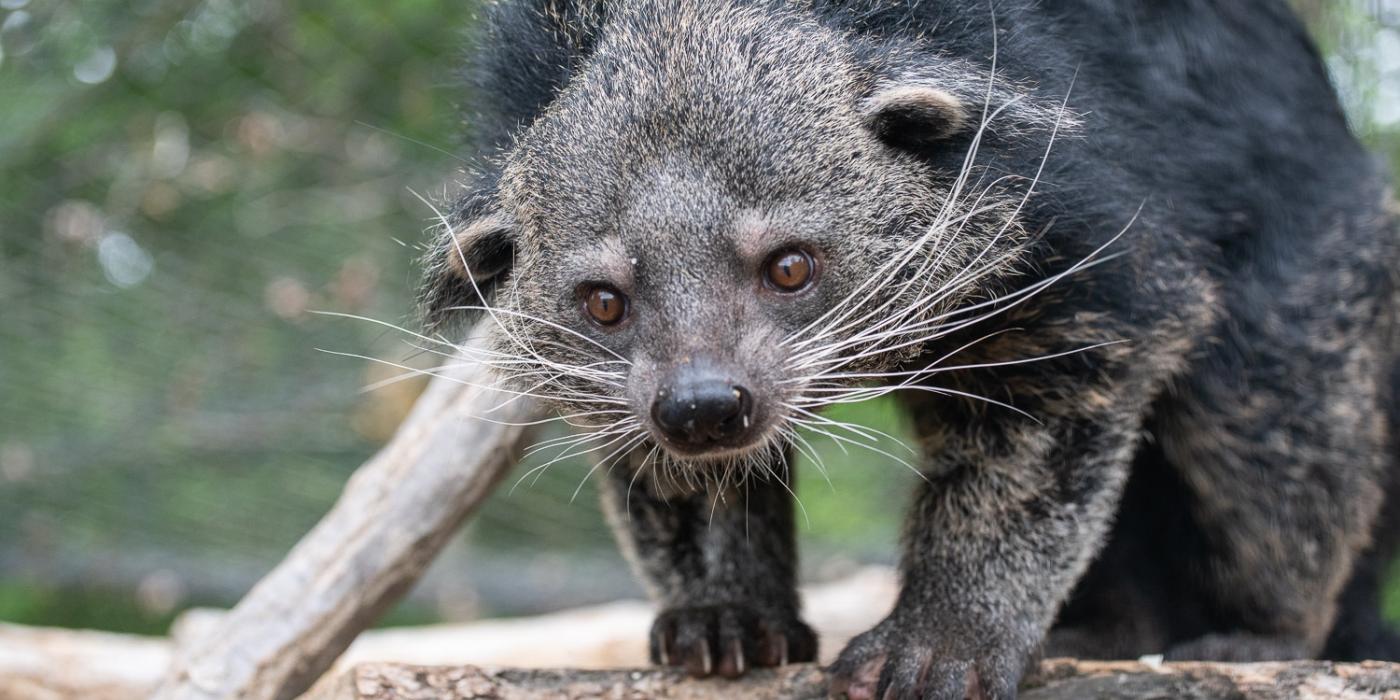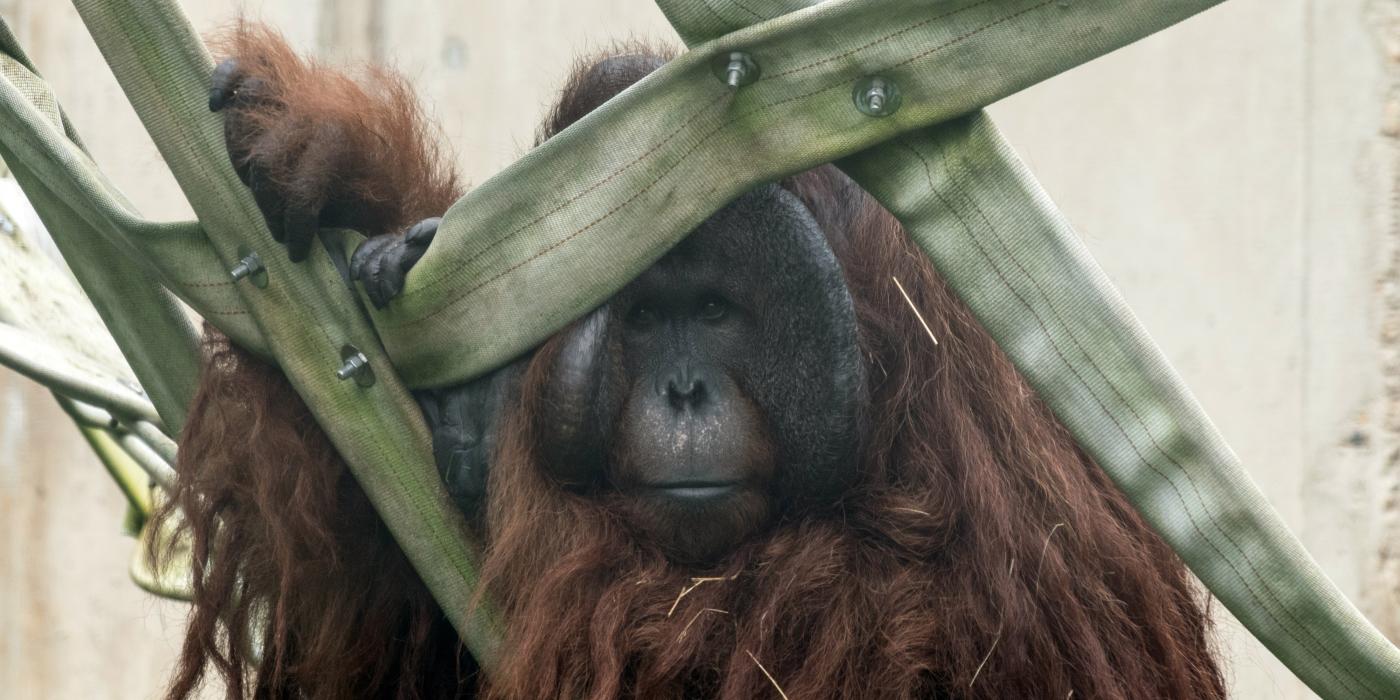Meet Bentley and Beemer, Our Collared Lemur Brothers
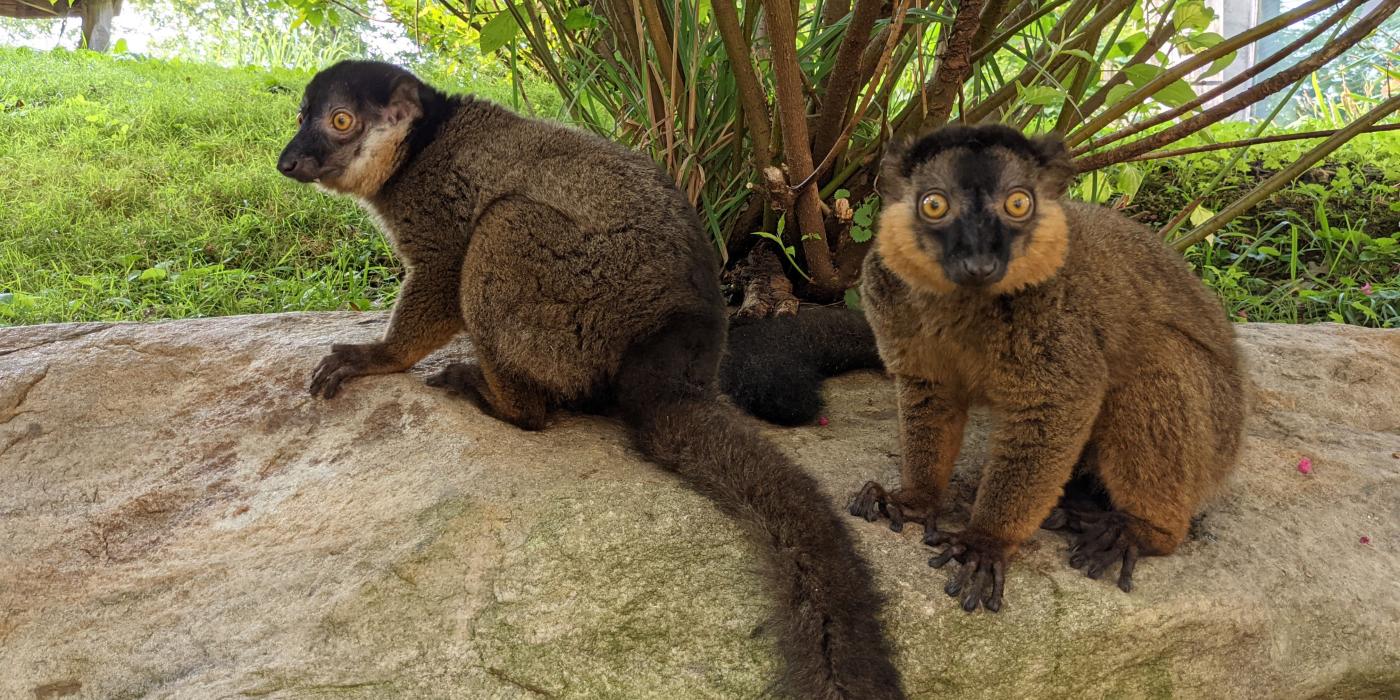
During your next visit to Smithsonian’s National Zoo, be on the lookout for two friendly new faces at Lemur Island! Three-year-old collared lemur brothers Bentley and Beemer arrived at the Zoo in May and made their public debut at the end of July.
Collared lemurs’ vocalizations are one of the most endearing traits about them. To communicate with one another, they use a series of grunts, snorts, and clicks, which just make me giggle! These vocalizations, albeit adorable, serve as an important tool for maintaining their territories and home ranges.
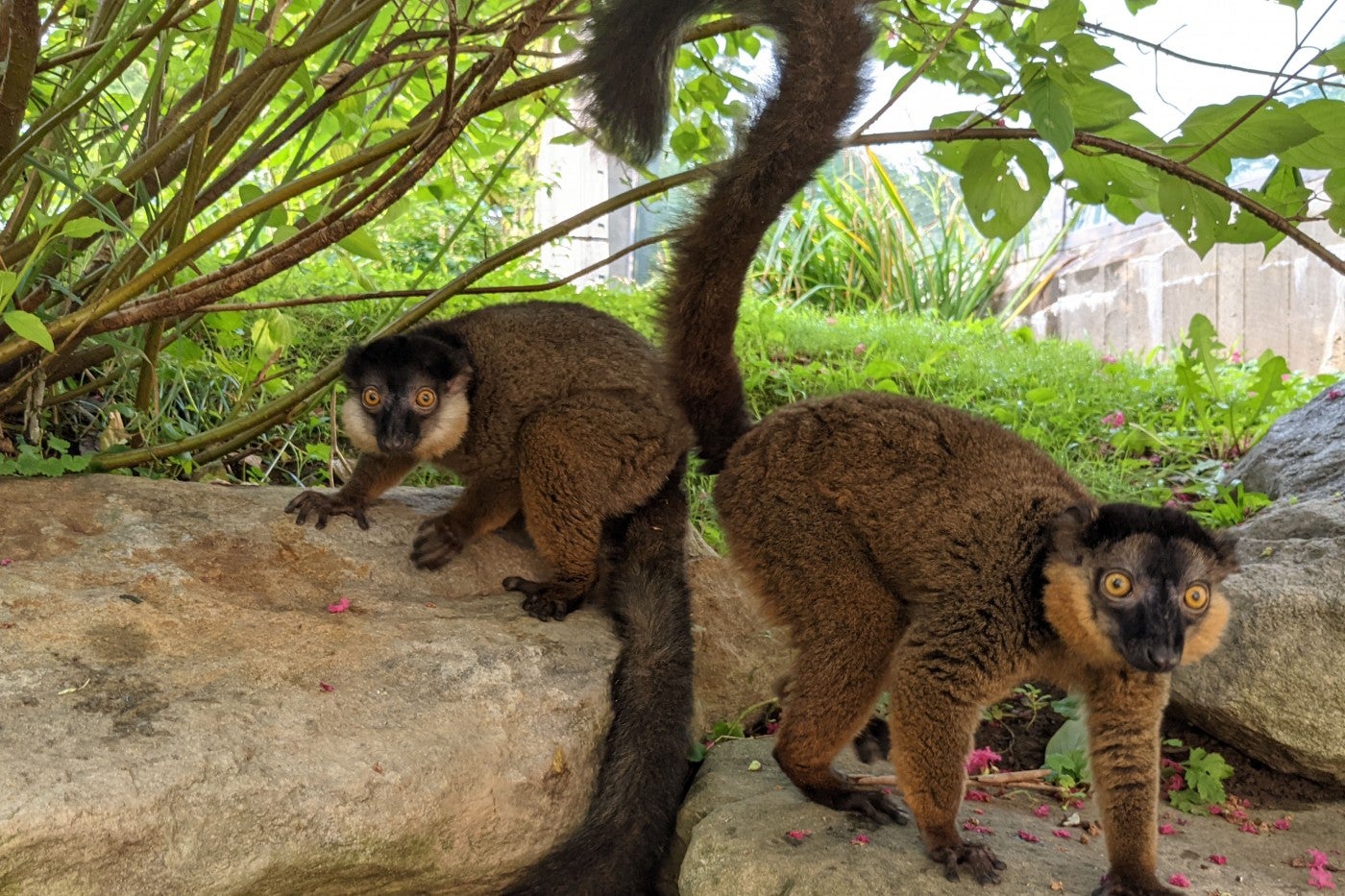
You can tell the brothers apart by looking at the color of their collars: Bentley’s is more orange, whereas Beemer’s is more cream. Collared lemurs are sexually dichromatic; males’ and females’ coats are different colors. Males’ fur is darker overall, and their collars range from reddish-brown to cream. Females’ fur is generally lighter in color, their collars are usually reddish-brown and their faces are gray.
Bentley and Beemer have sweet personalities and warmed up to keepers very quickly. Unlike many other lemur species that exhibit female dominance, collared lemurs do not have a definitive dominance structure. Depending on the personalities of the group, a male or female could be the most dominant individual. Bentley is a bit more brave than his brother. Between them, he is the explorer. Beemer is his brother’s shadow. Wherever Bentley goes, Beemer isn’t far behind.
All of our primates enjoy fruit, and the collared lemurs are no exception. This species is frugivorous; that is, the majority of their diet consists of fruits. In the wild they also eat nectar, bark, insects and even small reptiles like chameleons. At the Zoo, we feed them a balanced diet of fruits, vegetables, nuts and primate chow.
Recently, we added some new items to their diet, including acorn squash and mixed nuts, which they seem to enjoy. Beemer is especially fond of food. Sometimes, when Bentley is busy exploring, Beemer will lag behind and eat instead!
Bentley and Beemer share the Lemur Island habitat with six other lemurs: four male ring-tailed lemurs (Tom Petty, Southside Johnny, Bowie and Birch) and two male black-and-white ruffed lemurs (Wiley and Aloke). When we facilitate introductions among different species of lemurs, the process is slightly different than introducing other primates, like gorillas or orangutans. With lemurs, we look for behaviors that demonstrate tolerance and co-existence rather than affiliation and cohesion. Lemurs tend to stick to their species-specific social groups. As long as the groups leave each other alone, we are happy.
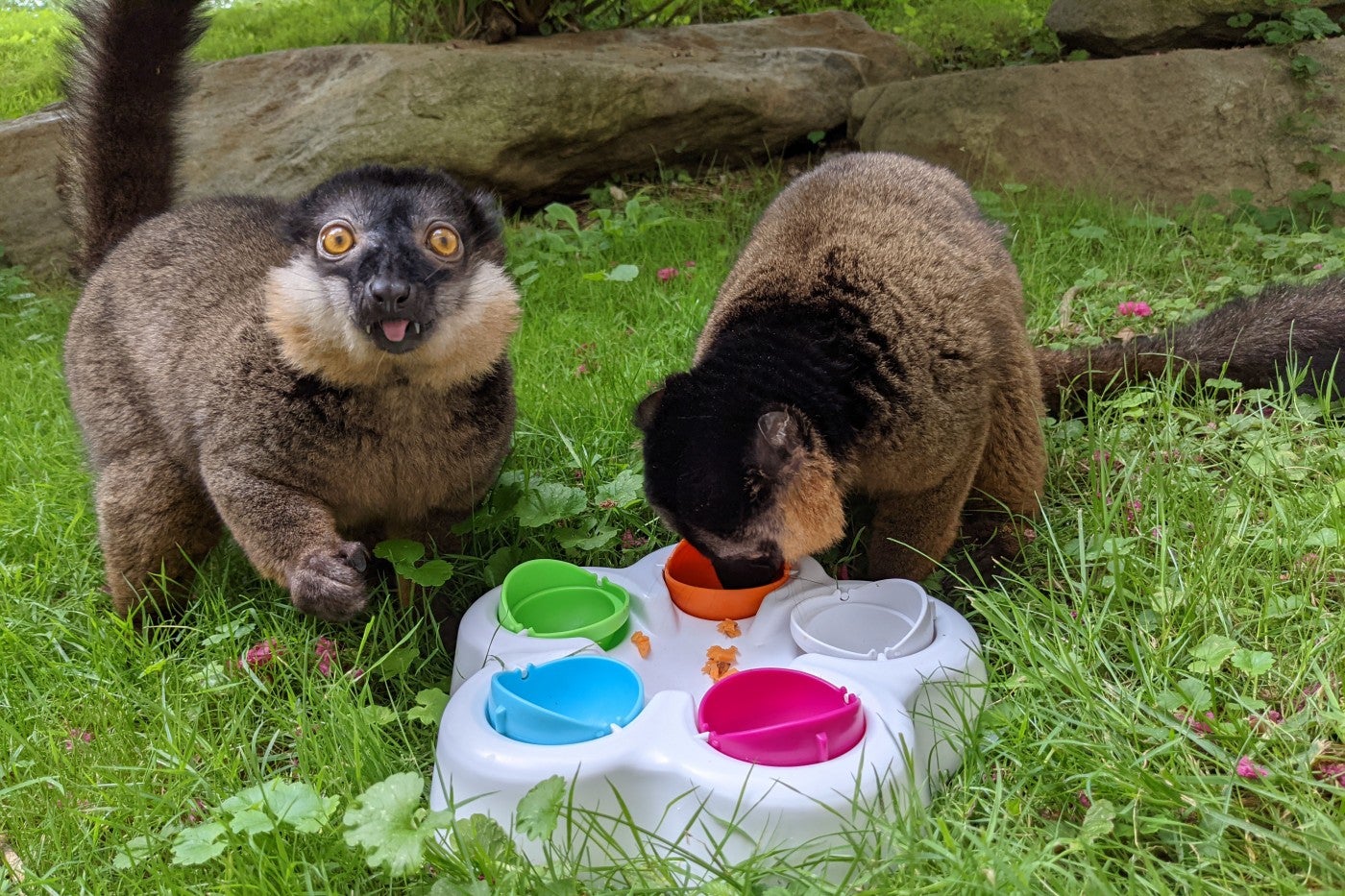
We introduced Bentley and Beemer to our ring-tailed lemurs first since they lived with this species previously at the Bronx Zoo. Given that positive prior experience, we thought that this introduction would be less jarring for them.
We began with visual “howdy” introductions, where the lemurs remained in separate spaces but were able to see and smell one another through a window, a shared mesh door and across a hallway. When we did not see any aggressive or negative behaviors, we moved on to face-to-face introductions where we opened the door between their enclosures, effectively creating one large, shared space.
I am happy to say that everything went smoothly and nobody showed aggression. Both social groups mostly kept to themselves, just as we expected. Introductions with Aloke and Wiley are a work in progress. We hope to exhibit all three species together soon!
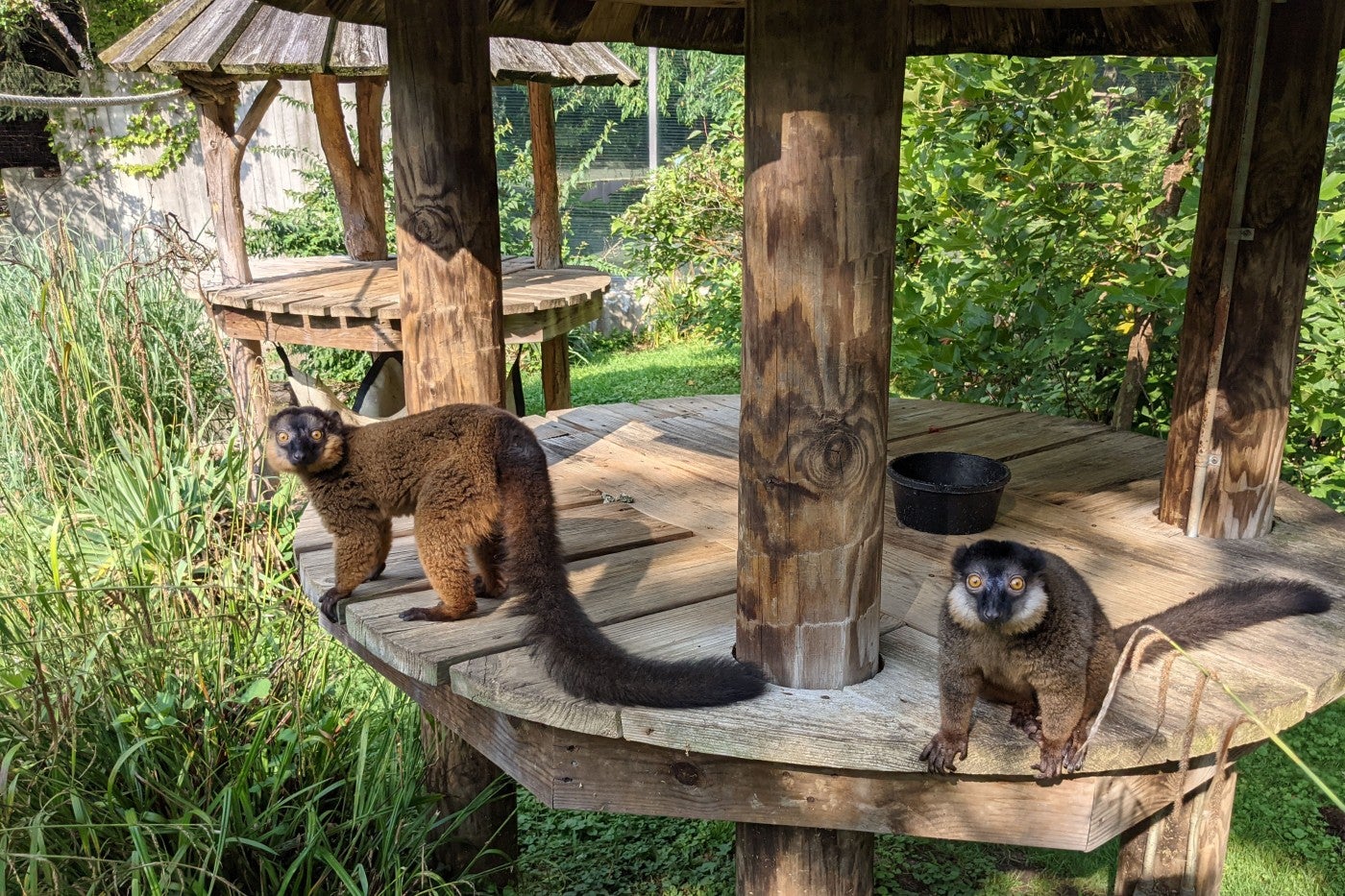
As part of our daily duties, the primate team conducts husbandry training sessions with all our animals. The behaviors that they learn— following a target (a ball on the end of a dowel), stepping onto a scale, entering a crate, or presenting different body parts for inspection—are a critical component of how we care for them and monitor their health.
It is up to the animals whether they participate and, on most days, they do. They seem to enjoy socializing with keepers. Training sessions also give them an outlet for physical and mental exercise, since they need to move and think about what we’re asking them to do! When they do the correct behavior asked of them, they receive raisins—a favorite treat—as a reward.

Bentley and Beemer are new to our training program, so we started at square one: target training. For this behavior, a keeper presents the target to the lemurs, and instinctively they move toward the ball and sniff—the exact behavior we want them to do!
Mastering this behavior will enable them to voluntarily participate in more complicated medical behaviors down the road. Eventually, they will learn to enter the area where our vets conduct medical exams and how to station (hold still) on a scale while holding a carabiner. This will allow us to obtain their individual weights even when they are with their social group.
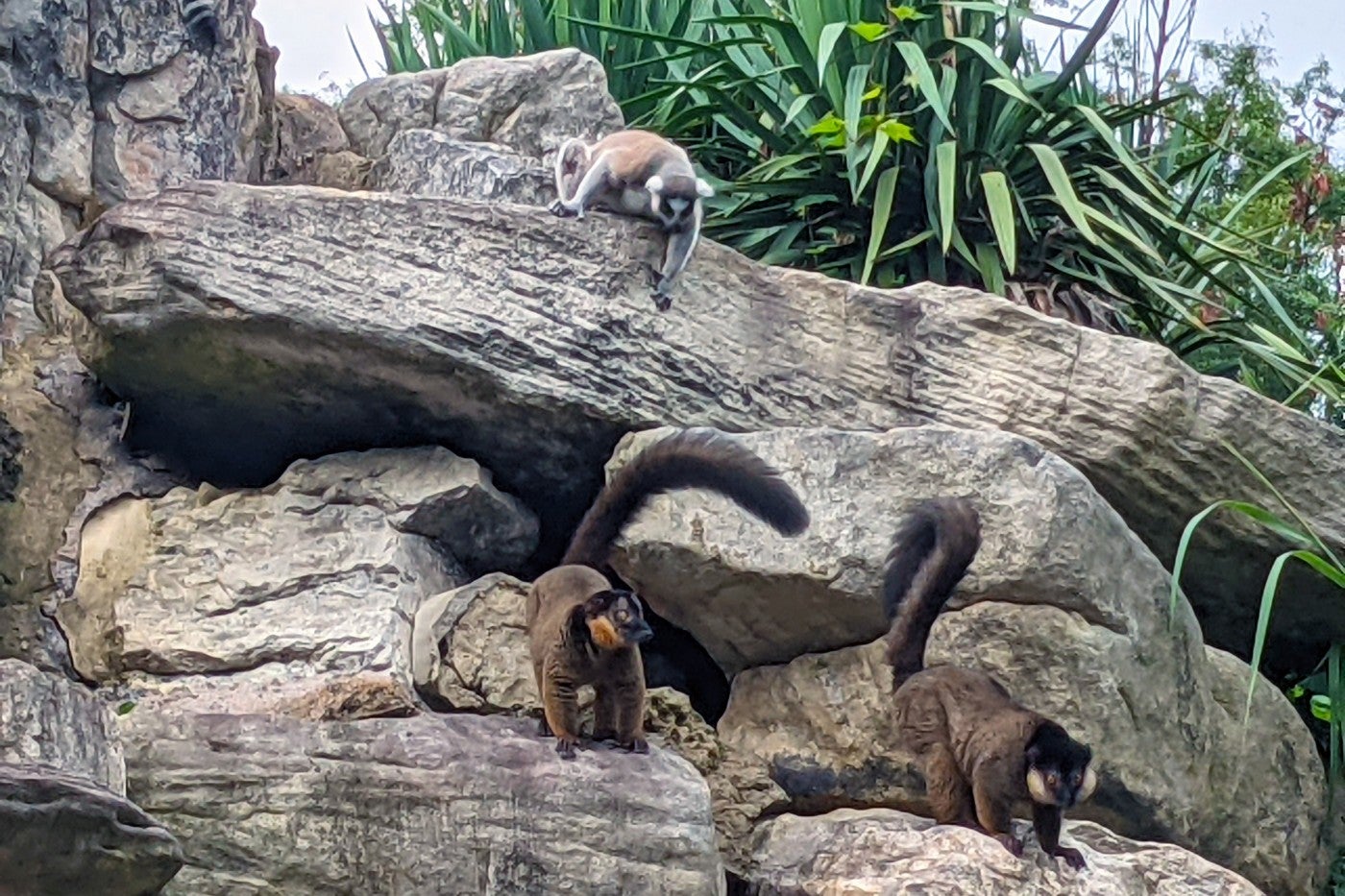
During your next visit to the Zoo, stop by Lemur Island and keep an eye out for Bentley and Beemer! They are still acclimating to their habitat and tend to hang out near the bushes by the keeper door. As their comfort level increases, I imagine they will venture out further into the habitat.
Collared lemurs are not as terrestrial as ring-tailed lemurs, and they do not spend as much time in the tops of trees like black-and-white ruffed lemurs. In general, the best place to look for Bentley and Beemer is midway up the trees, in the huts or up on the rocks near the waterfall. On good weather days, they are outside and most active between 8 a.m. and 2 p.m.
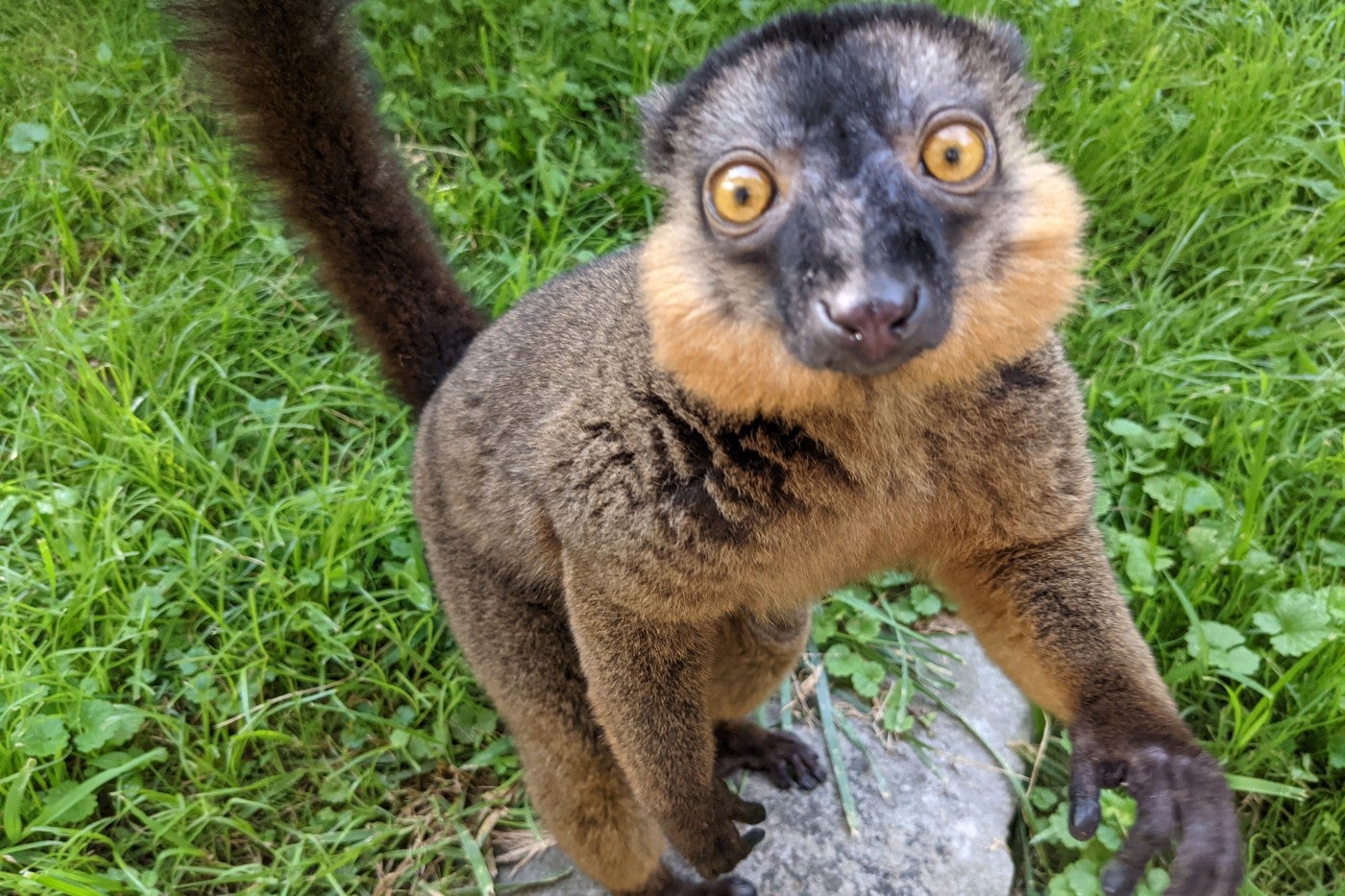
I want to help collared lemurs! What can I do?
Since 1997, collared lemur populations have declined more than 50% in their native Madagascar. The good news is that we can help this endangered species by being conscious consumers.
One of the major threats to these and all lemurs is the pet trade. In order for these animals to thrive, they need proper habitats, social networks, veterinary care, enrichment and nutrition. None of these are easy or inexpensive to provide. The best way to help is by refraining from purchasing a lemur as a pet.
Also, be careful about the content you like and share on social media. Don’t perpetuate the myth that these endangered animals make good pets by sharing posts that depict them as such. Lemurs belong in the wild or in facilities that have the space, staff and amenities necessary to give them the best quality of life.
As the human population grows and people require more resources for land and goods, many animals—including collared lemurs—face habitat loss. In southern Madagascar, timber extraction, slash-and-burn agriculture and the burning of hardwood trees to produce coal have decimated the tropical moist lowland forests and montane forests where they live.
When purchasing furniture, décor and other items, always do your research. Ensure you are not buying products made from materials like ebony and rosewood, which are illegally harvested. Instead, seek out products that are ethically produced and benefit local people.
Last but not least, share Bentley and Beemer’s story with your friends and family! The more we learn about lemurs, the more we come to care about them and take action to ensure their future on our shared planet.
This story appears in the September 2021 issue of National Zoo News. Love lemurs? Read past updates about our ring-tailed lemurs and black-and-white ruffed lemurs!

